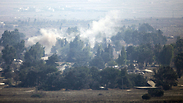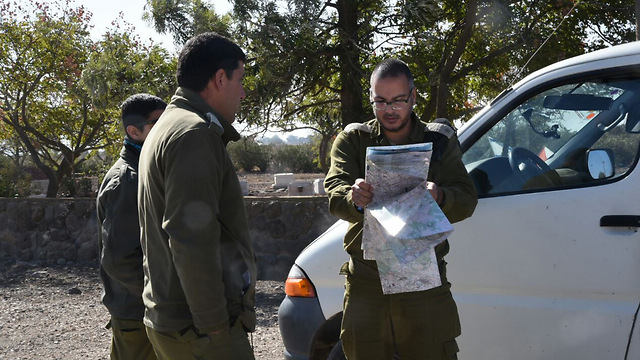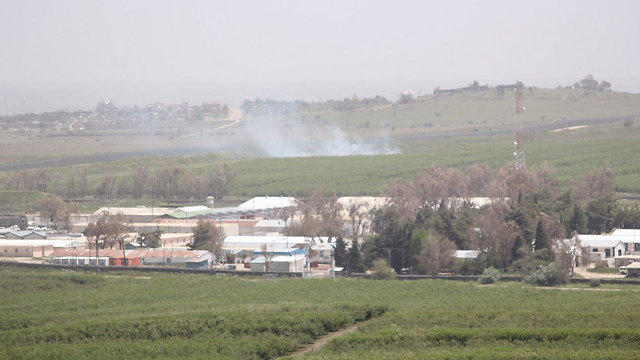
Syrian rebels fighting in Quneitra
צילום: AFP
The Golan incident: Local initiative or strategic change
Analysis: Sunday’s shooting at Golani forces was probably the act of a local ISIS commander who could not resist the temptation of trying to hit an Israeli target; a less likely possibility is that ISIS decided to attack an Israeli target as an act of desperation; either way, it would be prudent of us to remain alert and well-hidden in the future.
Sunday’s incident in the southern Golan Heights, in which the Israeli Air Force killed four ISIS terrorists following shooting toward Israel from Syria, seemed like an occurrence that the IDF handled quite well. All the signs showed that the southern Lebanon “branch” of ISIS attacked the IDF’s Golani Brigade that was on ambush mission in the area.
The question now seems to be whether the event was a local initiative of the Shuhada al-Yarmouk, the ISIS affiliate in Syria on the border with Israel that had recently changed its name to the Khalid ibn al-Walid Brigade, or a planned initiative that constitutes a semi-baked change of strategy that necessitates an appropriate response from the IDF. It may also be a one-time event, with the IDF strike that followed acting as enough of a deterrent so as to put them off trying a similar event in the future.
There seem to be three possible scenarios here. The first is that the Golani Brigade on a mission was found out by the ISIS-affiliated forces, which tempted one of their local commanders so much that he sent a truck equipped with a machine gun to shoot at it, either for deterrence or to succeed in hitting it.
If this was indeed the case, it means that the Golani unit did not adequately camouflage itself: The fact that ISIS forces had the foresight to prepare a machine gun-equipped truck shows they knew who and where they were shooting at. In this case, the IDF needs to investigate and draw the appropriate conclusions so that the next time it sends a normally excellent infantry patrol such as Golani’s go out, their field craft ability will be better.

IDF soldiers near the Golan border following the shooting incident (Poto: Avihu Shapira) (צילום: אביהו שפירא)
Another, less likely possibility is that the ISIS affiliate in the southern Golan Heights has become increasingly desperate, having been cut off from the central ISIS headquarters in the Syrian city of Al-Raqqah, or that ISIS in general is finding itself in dire straits, so that it decided to strike at Israel as an act of despair. ISIS, for that matter, could be planning large-scale terrorist attacks against Israel in the Golan, in which case Israel should up its alertness around the border fence and look out for car bombs that might be trying to reach Israeli villages in the Golan.
And then there is a third possibility, where one of the many moderate rebel forces currently fighting ISIS in Syria tried to provoke the IDF so that it would carry out a response against ISIS, thereby doing the rebels’ work for them.
It is most likely that what actually happened was that it was a local attack that targeted the Golani unit, causing the Israeli Air Force to successfully take out four ISIS terrorists. However, we should nevertheless increase our vigilance on this front and make sure that our forces are properly camouflaged so that local ISIS commanders will not get further opportunities to show their fighting spirit.












